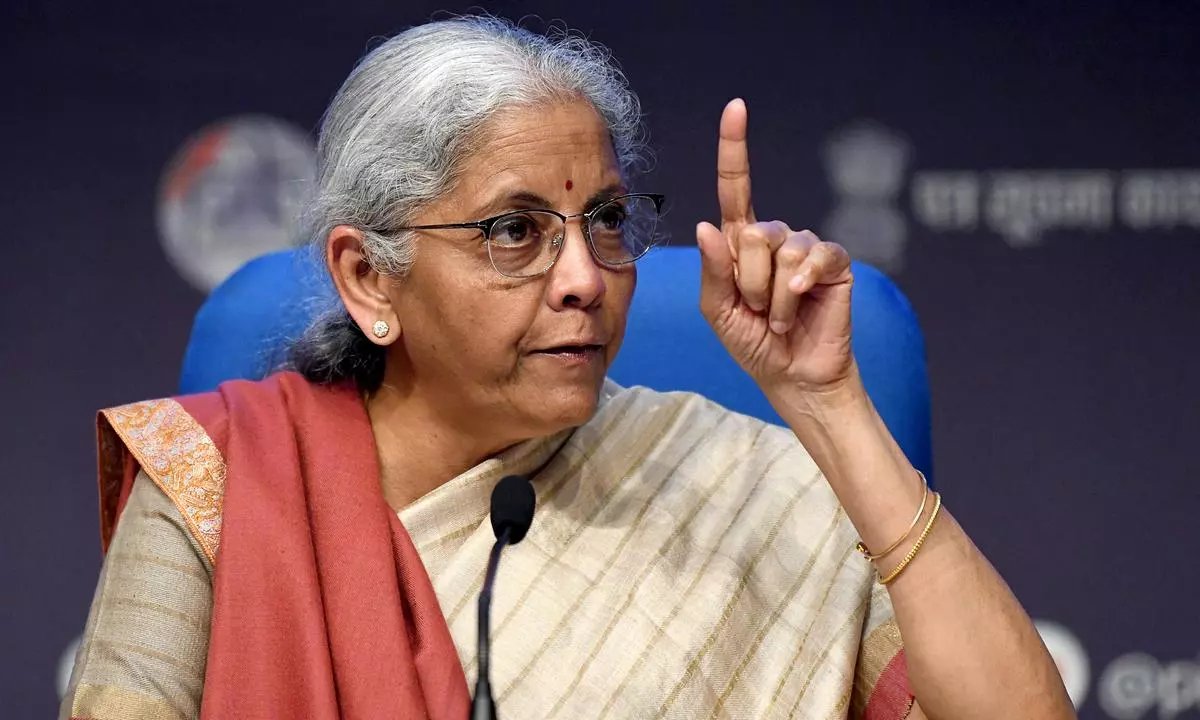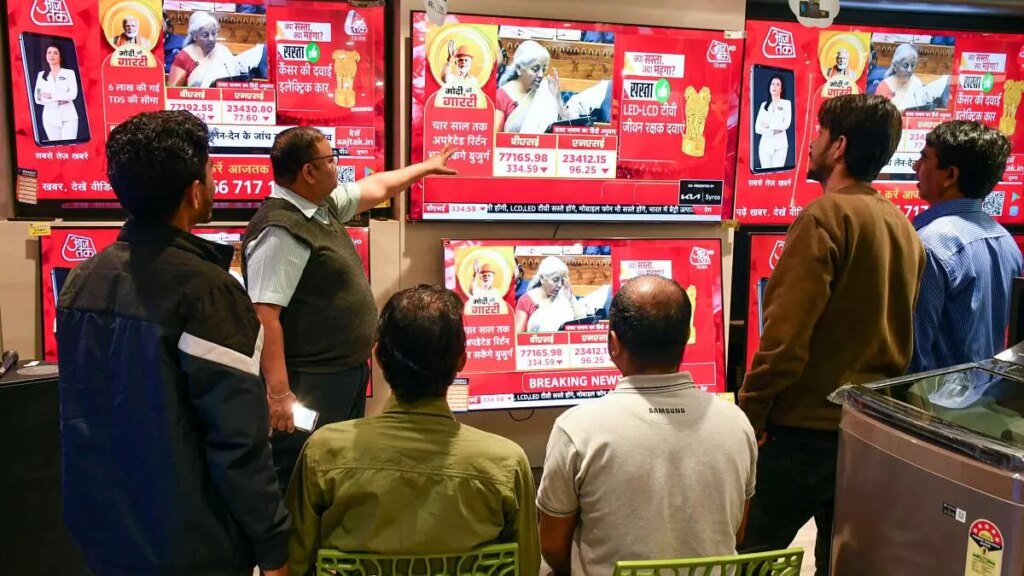No matter where in the world a baby is born, a universally favourite game is playing “peekaboo”. Babies are surprised when they see things come back after being out of sight, and the game is structured around the time-tested method of creating a joke; the setup, the build-up and the punchline. The Swiss developmental psychologist Jean Piaget called this principle object permanence because it helps babies test and re-test a fundamental principle of existence: that things stick around even when you can’t see them.
In much the same style, the Union Budget has come, and gone, but a lot of India’s fundamental challenges remain. Perhaps the solution then lies not in what is seen and heard, that is the budget speech, but in what is not. Three questions and one number betray all that was not said and all that was not addressed.
Let’s take that key figure first. A quick read of the budgetary proposals indicates that in 2025 as well, the decadal census, that has now been overdue since 2021, is unlikely to be carried out. The Union Budget has pencilled in under Rs.600 crores for the exercise. By its own estimates, the Union Cabinet had, in December 2019, approved the proposal for conducting a census of India 2021 at a cost of Rs.8,754.23 crore and updating the National Population Register (NPR) at Rs.3,941.35 crore. As things stand, it looks like the exercise remains on hold.
That figure gives rise to three key questions from this budget.
Who is India’s middle class?
In September last year there were some indications the process of conducting a census would begin soon. The year 2024 gave way to a new year and a new hope that this critical survey will be carried out. Even if things were to run as planned, the process would take 18 months to complete, and it would need to cover a massive period of over 15 years.
Why is this survey important? The census is a critical tool in understanding how many Indians are excluded from welfare schemes when they are in need of it, whether resource allocation is happening efficiently, and because the census lends vital insight into other metrics of economic data, inflation and jobs estimates.
So, when the Union government announces a change in income tax slabs, it begs the question: who does this impact? Are the beneficiaries of this change based on their income levels or their consumption levels? The problem is, there is no clear answer, simply because there is no clear data. The government categorises households earning less than Rs.8 lakh a year as part of the Economically Weaker Section (EWS), which makes them eligible for some forms of reservation.
Also Read | Growth plans or political strategy?
In 2021, the Pew Research Center identified two pockets—India’s middle class and the poor—as having seen massive changes post-pandemic. It estimates that the middle class shrank by 32 million in 2020, accounting for 60 per cent of the global retreat in the number of people in the middle-income tier (defined as people with incomes of $10.01-$20 a day). In parallel, the number of people who are poor in India (with incomes of $2 or less a day) is estimated to have increased by 75 million, accounting again for nearly 60 per cent of the global increase in poverty.
The National Council of Applied Economic Research says a middle class household is one whose income is between Rs.2 lakh and Rs.10 lakh per year. There’s another view from the People Research on India’s Consumer Economy and India’s Citizen Environment, a not-for-profit think tank. In 2022, they defined a middle class household as one that earns between Rs.5 lakh and Rs.30 lakh per year, and a middle class individual as one who earns between Rs.1.09 lakh and Rs.6.46 lakh a year. They also estimated India’s middle class accounted for over 30 per cent of the total population.
The report by PRICE (People Research on India’s Consumer Economy) did point to the glaring difference between India’s lowest income households and others. If the average all-India household income figure were placed at Rs. 5.43 lakh in 2020-21, destitute households earn one-seventh of that, while middle class and rich households earn 13 times and 50 times, respectively, of that figure.
Do we really know what constitutes the middle class, how intense the pressure of household inflation has been, and who this change in tax slabs will benefit? What we do know is that consumer goods companies have been flagging the slide in consumption for many quarters now, particularly so at the non-premium end of goods and products.
Would it not be useful in the face of such glaring inequalities for the finance minister to explain who these tax changes benefit? A census is the only clear answer to these questions and the Union budget is just throwing darts in the air with tax slab tweaks if it does not have a clear number to put against the categories it seeks to see a “consumption bump” in. Let time be the judge of where this change in slabs takes us, but let a census be the answer to what India’s middle class now constitutes.
A jobs audit
Amidst much fan-fare, in last year’s budget, the finance minister announced a new scheme that would provide internship opportunities to one crore youth in the top 500 companies in five years. A pilot project of the scheme was launched in October last year, targeted at providing 1.25 lakh internship opportunities. Chinks are already showing up in this plan. Under the scheme, the Centre has committed to offer each intern a monthly allowance of Rs.5,000 for 12 months, along with “one-time” aid of Rs.6,000. That’s Rs.60,000 annually for each intern. Here’s the hitch: a monthly stipend of Rs.5,000 is woefully lower than what many companies offer for internships with similar work profiles.
There are other problems. While investing in the scheme, surveys reveal more than three-fourths of the companies engaged in this programme are prioritising tech roles that tap into digitally skilled talent. This presumes a level of both education and skill that may not be present in the vast swathe of young people looking for employment.

Union Finance Minister Nirmala Sitharaman addresses a Post Budget press conference at National Media Centre in New Delhi on February 1.
| Photo Credit:
RAHUL SINGH/ANI
There is the larger question of where we are as a nation riddled with a job crisis. Here’s what the International Labour Organization found in its ‘India Employment Report 2024’ that examined trends for youth employment, education, and skills. The youth unemployment rate has increased with the level of education, with the highest rates among those with a graduate degree or higher, and higher among women than men. In 2022, the unemployment rate among the youth was six times greater than among persons with a secondary or higher level of education (at 18.4 per cent) and nine times greater among graduates (at 29.1 per cent) than for persons who cannot read and write (at 3.4 per cent).
More broadly, wages and earnings are stagnant or declining. While wages of casual labourers maintained a modest upward trend during 2012–22, real wages of regular workers either remained stagnant or declined. Self-employed real earnings also declined after 2019.
Why did not the Union Budget make any mention of what progress has been made in its ambitious internship scheme? While it is no one’s case that the last few months would be enough to create a sea-change in the job environment, it is generally good practice for both organisations and governments to check the efficiency of an idea and its effectiveness. Which brings us back to the need for a census. Going by the government’s own refrain of not trusting what private think-tanks are pointing to around jobs and unemployment, let’s conduct a census to get a clear and present check on the job crisis, what kinds of jobs are being created, if they are, and wage stagnation and youth unemployment.
Growth is haemorrhaging
What was peculiar and striking in the budget speech was the absence of any mention of the sharp knock India’s GDP figures had seen. Growth is set to flump to a four-year low and even the government’s own economic survey has projected GDP growth at 6.3-6.8 per cent, a far cry from our 8 per cent growth ambitions. At this juncture, no one can predict how global trends turn nor how trade-wars and commodity markets move.
Also Read | The great inequality myth that rules India
In an environment like this, it was more than surprising to see the government increase allocation on capital expenditure by less than 1 per cent from a year ago. This when it has already missed its capex target by more than 8 per cent in FY25. In some ways the budget has been quite dispassionate as it has left those who track social sector spending equally frustrated with numbers for health and education looking woefully inadequate.
One clear indicator of this indifference remains the tone and tenor around MGNREGA, the world’s largest job guarantee programme, a consistent source of income for the rural unemployed and the undisputed post-COVID lifeline for rural India. The scheme has seen an allocation of Rs.86,000 crore, the same amount as what was set aside in the Union Budget presented in July last year.
By Monday, it will be back to normal for India’s industry, it’s social sector and its citizenry. The finance minister opened her speech with a quote from the Telugu poet and playwright Gurajada Apparao: “Desamante Matti Kaadoi, Desamante Manushuloi (A country is not just its soil, a country is its people).” In the spirit of those words, step beyond the budget, Madam Finance Minister. Let the people be counted, let the people be seen.
Mitali Mukherjee is Director of the Journalist Programmes at the Reuters Institute for the Study of Journalism, University of Oxford. She is a political economy journalist with more than two decades of experience in TV, print and digital journalism. Mitali has co-founded two start-ups that focussed on civil society and financial literacy and her key areas of interest are gender and climate change.
Source:https://frontline.thehindu.com/news/union-budget-2025-india-census-tax-slab-inflation-middle-class-unemployment-mgnrega-economy/article69169529.ece

